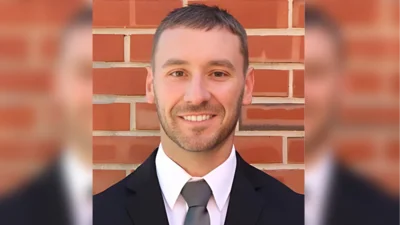Jeff Keicher, Illinois State Representative for 70th District | Official Website
Jeff Keicher, Illinois State Representative for 70th District | Official Website
National School Bus Safety Week, observed from October 20 to 24, aims to highlight the importance of school bus safety and the shared responsibility in protecting children as they travel to and from school.
The National Highway Traffic Safety Administration (NHTSA) is calling on drivers to be vigilant around school buses. According to NHTSA, "Even though school buses are designed to be one of the safest modes of transportation, far too many tragedies happen when drivers disregard the stop signs, ignore the flashing red lights, and fail to slow down."
In Illinois, many children depend on school buses for daily transportation. These vehicles are equipped with safety features that make them a secure option for students. However, officials emphasize that understanding and following proper safety practices remains essential for parents, children, and motorists.
Data from the State Board of Education and Illinois State Police indicate that the most dangerous part of a student's bus ride is at the bus stop. Most fatalities in bus-related incidents involve young children aged five to seven who are struck by motorists illegally passing stopped school buses. From 2013 to 2022, there were 169 pedestrian deaths in school bus-related incidents nationwide compared with 111 deaths among bus occupants; among those killed inside or near buses, 25 were walking at the time.
NHTSA states: "That’s why it’s illegal in all 50 states to pass a school bus when it’s stopped with its red lights flashing and stop-arm extended. When you ignore these warnings, you’re not just breaking the law, but you’re putting kids’ lives at risk."
Drivers are urged to pay attention when approaching a stopped school bus. The area within ten feet around a bus—known as the “Danger Zone”—is especially hazardous because it often falls into blind spots where children may not be visible.
Between 2000 and 2022, crashes caused by drivers illegally passing stopped school buses resulted in 55 fatalities; half were children on foot.
When encountering a slowing or stopped school bus:
- On two-lane roads: All traffic must stop at least twenty feet before reaching the bus.
- On four-lane roads: Only traffic moving in the same direction as the bus must stop.
- On one-way roads: All lanes must stop regardless of lane count.
State law also requires all school buses to halt at railroad crossings whether or not students are present. Drivers should never attempt to pass a stopped or crossing school bus until it has safely cleared tracks and resumed motion.
Motorists may proceed only after:
- The bus moves again,
- The driver signals them forward,
- Or flashing lights turn off and stop arm retracts.
Penalties for illegally passing a stopped school bus include a minimum $300 fine and three-month license suspension for first offenses; subsequent offenses carry higher fines ($1,000) and longer suspensions (one year). Offenders are not eligible for court supervision.
The theme for this year’s National School Bus Safety Week is “Driving Safely Into the Future.” NHTSA encourages everyone: "This National School Bus Safety Week, let’s commit to better, safer habits around school buses...when we take a little extra care, we’re investing in the safety of our kids and our communities."
To learn more about safe practices around schools buses visit NHTSA’s School Bus Safety webpage.
Keicher was elected as Republican representative for Illinois' 70th House District in 2018 after Robert W. Pritchard stepped down.






 Alerts Sign-up
Alerts Sign-up